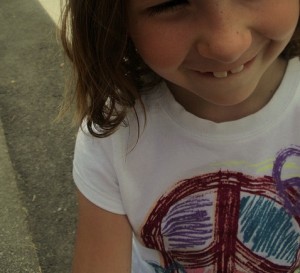#BLOG4IDEC, HUMAN, IDEC2012, POWERFUL, RELEVANT, TRANSFORMATIVE
This post supports Blog for IDEC 2012 week and is cross-posted at Cooperative Catalyst.
At an extraordinary and unusual school I visited recently, I observed a seven-year-old girl come before the school’s judicial council. The day before she had violated a cardinal rule of the school. She had failed to look after her own safety. She and four of her friends had ventured to a pond dock on the school grounds, where they saw a water snake. Intrigued, they wanted to catch it. Using a Tupperware container, string, and some duct tape, they made a trap and dipped it into the water. The little girl, her heavy backpack still on her back, leaned too far out over the dock and fell into the water. Some of the older, high school boys saw her fall in, rushed to the pond, and pulled her out. The water was only waist-deep and slow moving, but in the life of the school, where children are allowed full freedom to roam the school grounds as long as they look out for their safety, no kid had ever fallen into the pond before. The adults at the school, understandably, were beside themselves.
As I watched the judicial process unfold–the judicial counsel is run entirely by students with a carefully developed set of understandings and procedures evolved over many years–I wondered, how could holding a seven-year-old responsible for her own behavior in this way be “human,” the topic of this post? Developmentally, aren’t seven-year-olds just a bit too young to be expected to think about these kinds of things for themselves, especially in moments of intense curiosity? What were the implications of sanctioning this little girl more severely than her four friends, perhaps simply because her backpack made her unbalanced in ways she was unaccustomed to?
Human education is about exactly these sorts of questions. Real and important questions about individual liberty, collective responsibility and accountability–and how ironically, safety can sometimes be achieved only in a confrontation with danger.
The love and care with which the students on the judicial body, ages 8 to 17, gently questioned the little girl, was touching, beautiful and very serious. When she entered the room (each little girl was questioned separately), she was asked to explain what happened. She said, “I’m afraid,” and an adult she had chosen to accompany her to the meeting held her in her arms. A fourteen-year-old girl gently queried, “How far were you away from the edge? Can you show me on this table?” “Did you hear the older boys calling to you to be careful?” The little girl answered in calm, clear tones. “This far. No.” The council asked her: you know that you are going to be charged? Yes, she said. Do you know why? Yes, she said. A member of this community for a couple of years already, this child understood what was afoot, and perhaps also, why it was a very big deal. As I watched this little girl, in a pink t-shirt with a peace sign on her tiny flat chest, I saw her grow under the gaze of this serious attention. Charged and unforgettable, it was a moment of human beings in real consideration of the right way to hold each other and love each other, and offer each other freedom and boundaries at the same time. And how little people can grow into themselves in such a circumstance.
Later in the day, when the whole school deliberated the recommended punishment–lack of access to the pond and a suspension–the adults in the community passionately disagreed with each other. They debated the philosophical principles the incident represented. If a fence goes around the pond, then what? When we tell parents that we expect their kids to be responsible in this way, and we live it, then it creates a “charge,” real and important, for us, the parent, the child. Powerful human education continued on for everyone, in all its unvarnished complexity and lack of clear answers. Small, squirmy nine-year-old boys sat through the entire two-hour meeting voluntarily; older girls knit while the talk went on. The whole-school meeting was ably run by a senior girl.
Without writing at length about the circumstances of this fascinating incident–and its complex and multi-hued punishment–what I saw at this extraordinary school was almost the direct opposite of what I observe in many American schools, where children are schooled down to size almost from the moment they enter. They are–even now with our slightly-better-informed understandings of human capacity–still tracked into ability groups, labeled and sorted around learning abilities and disabilities, and denied creation of a truly accountable community, because adults are almost entirely in charge. (It is inconceivable for them not to be.) In the conventional educational system, the places where children are allowed to show initiative and to be in charge, are all around individual attainment (get good grades, do well on the state tests), competition, and engagement in adult-sanctioned activities. Legally and morally, students are inmates in a system that denies them access to the complexity of the question of what to do if a seven-year-old falls into the pond. When one of our members has violated a rule, what does this mean for all of us, when we are all truly bound together?
A tiny girl becomes big, through contemplation of the seriousness of her own actions. A community becomes more complex and interknit through passionate disagreement, not bland adherence to a set of rules. Children are allowed genuine and near-complete adult authority, and they handle it ably and maturely. Human education means that we will break some of the old rules because they no longer serve us.
How big are you willing to let kids be? How big are you willing to let yourself be? How many rules are you willing to break in service of a new kind of education?




Recent Comments